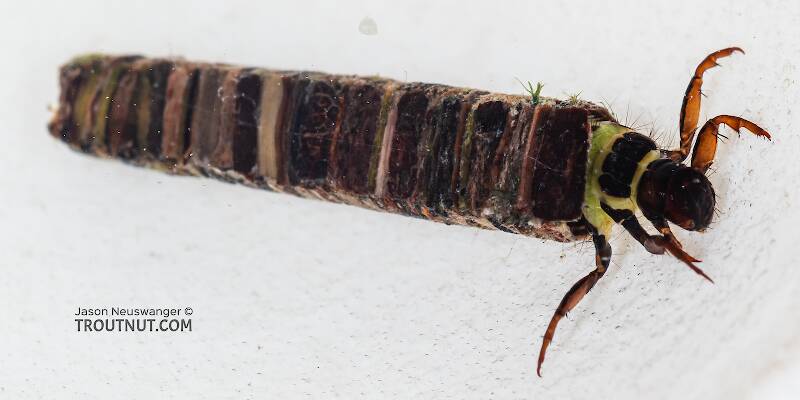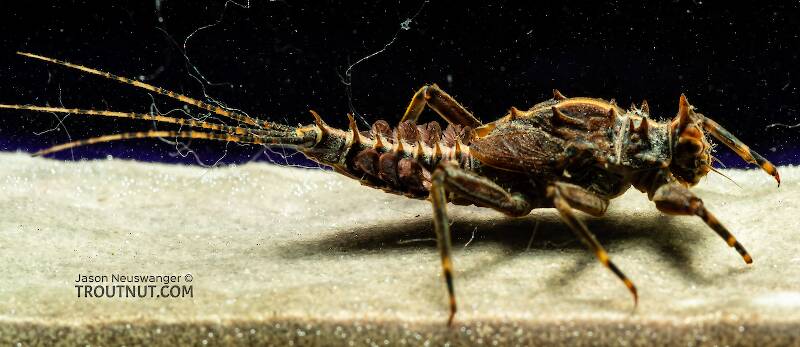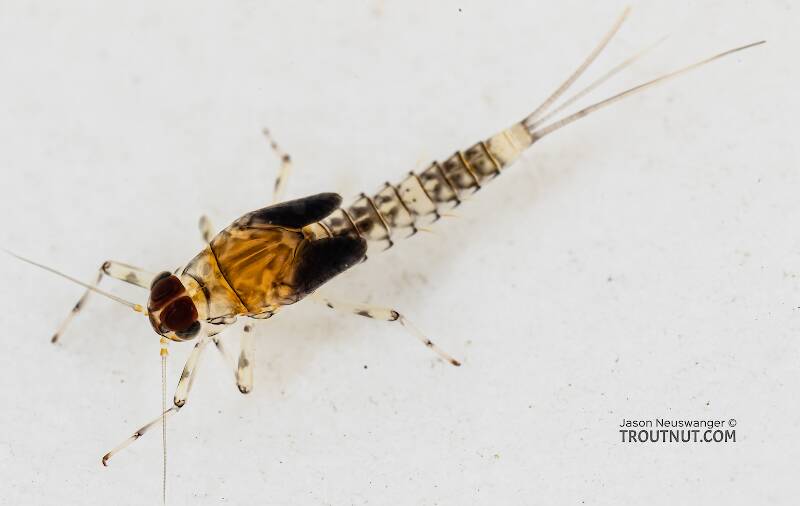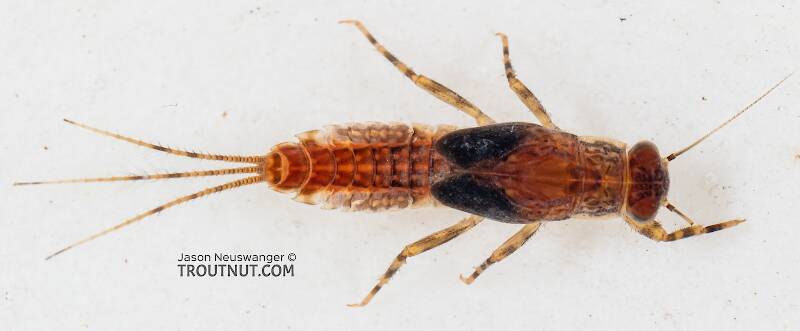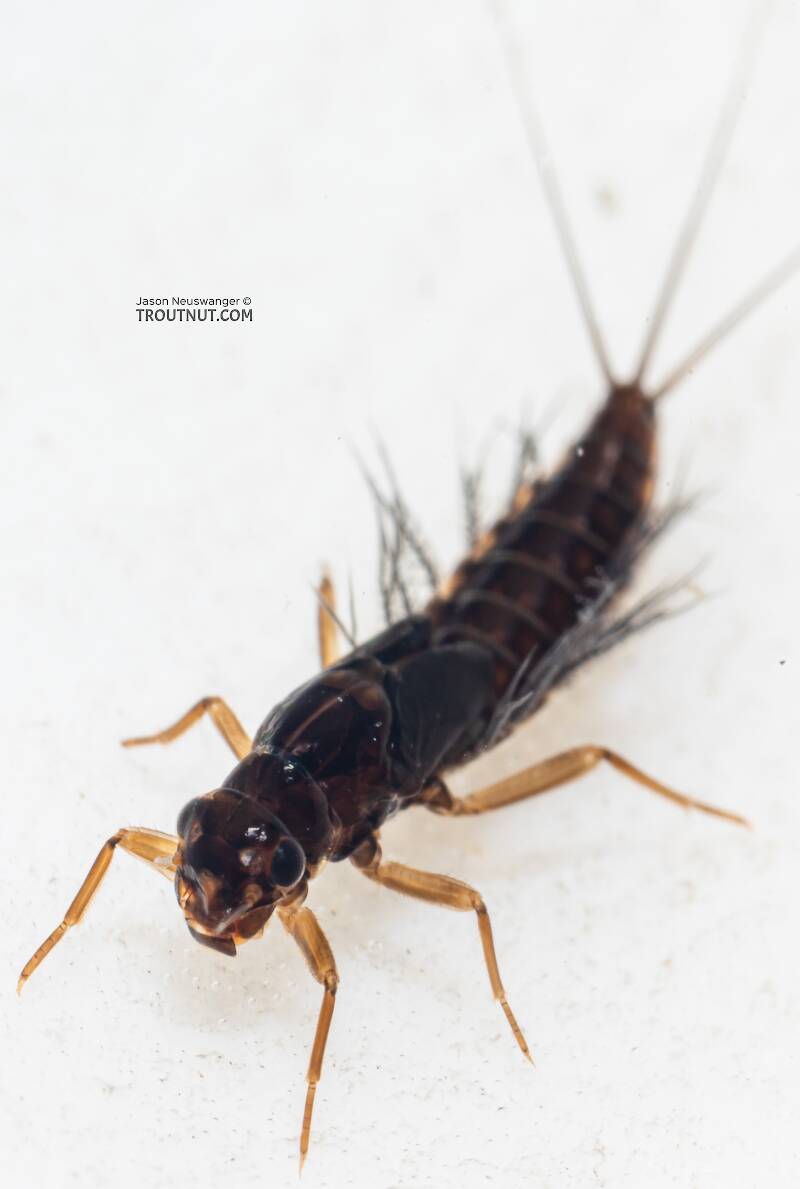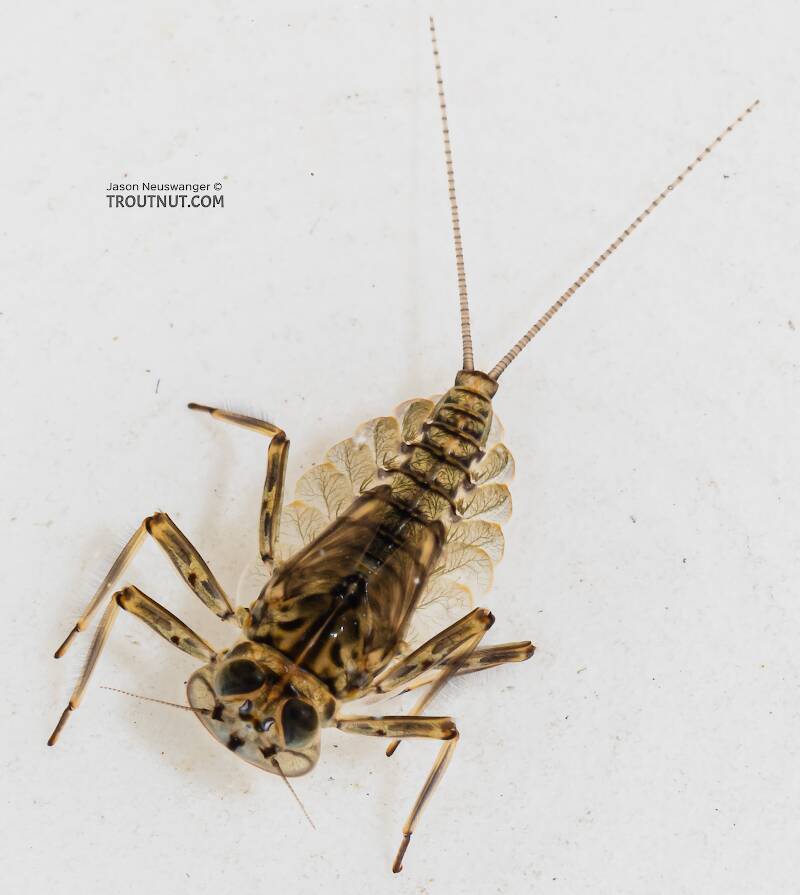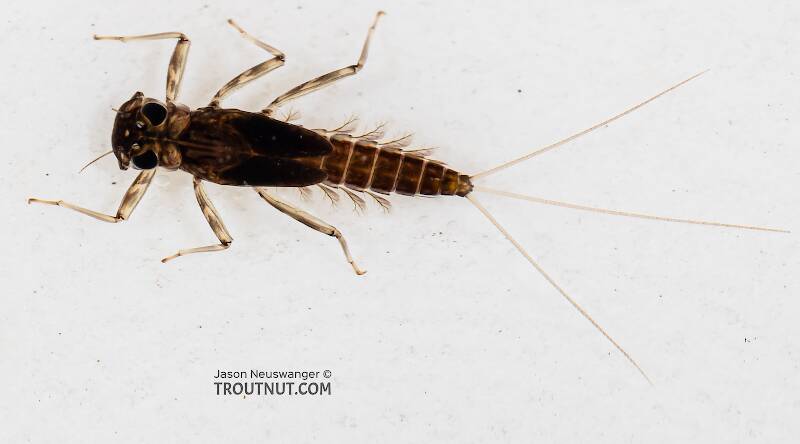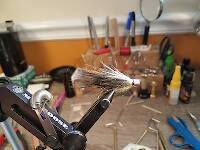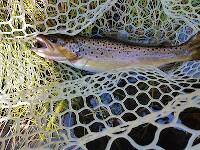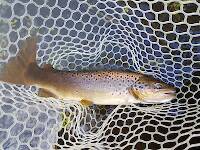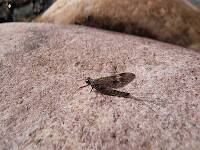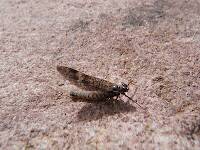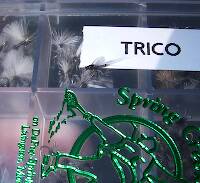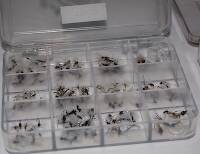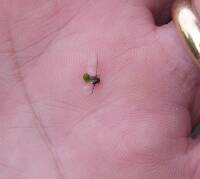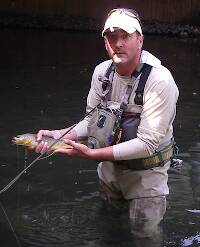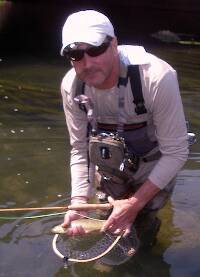
Hex Mayflies
Hexagenia limbata
The famous nocturnal Hex hatch of the Midwest (and a few other lucky locations) stirs to the surface mythically large brown trout that only touch streamers for the rest of the year.
Featured on the forum

As far as I can tell, this species has only previously been reported from one site in Oregon along the Columbia gorge. However, the key characteristics are fairly unmistakable in all except for one minor detail:
— 4 small yellow spots on frons visible in photos
— Narrow occipital spinule row curves forward (but doesn’t quite meet on stem of ecdysial suture, as it's supposed to in this species)
— Short spinules on anterior margin of front legs
— Short rposterior row of blunt spinules on abdominal tergae, rather than elongated spinules dorsally
I caught several of these mature nymphs in the fishless, tiny headwaters of a creek high in the Wenatchee Mountains.
— 4 small yellow spots on frons visible in photos
— Narrow occipital spinule row curves forward (but doesn’t quite meet on stem of ecdysial suture, as it's supposed to in this species)
— Short spinules on anterior margin of front legs
— Short rposterior row of blunt spinules on abdominal tergae, rather than elongated spinules dorsally
I caught several of these mature nymphs in the fishless, tiny headwaters of a creek high in the Wenatchee Mountains.

Troutnut is a project started in 2003 by salmonid ecologist Jason "Troutnut" Neuswanger to help anglers and
fly tyers unabashedly embrace the entomological side of the sport. Learn more about Troutnut or
support the project for an enhanced experience here.
Quick bug stop on the Dosewallips River
Quick bug stop on the Dosewallips River
By Troutnut on July 5th, 2020
This long day trip from home to the Olympic Peninsula was primarily an attempt to dig a geoduck, a Pacific Northwest delicacy and the largest species of burrowing clam. I built a special tool to help dig them up from 3 feet under the sediment in the tidal flat off the Dosewallips River estuary, where the big clams are exposed only during the lowest tides of the summer. They're apparently located among the eelgrass at this beach by locating where they spurt jets of water 5-10 feet into the air as the tide recedes or rises. Unfortunately, I didn't see a single jet of water nor any other sign of a geoduck, even with the tide dropping to -2.8 feet.
My consolation prizes were some delicious steamer clams (manila clams), an easy find higher in the tidal zone, and some bugs to photograph from a short sampling stop upriver.
My consolation prizes were some delicious steamer clams (manila clams), an easy find higher in the tidal zone, and some bugs to photograph from a short sampling stop upriver.
Photos by Troutnut
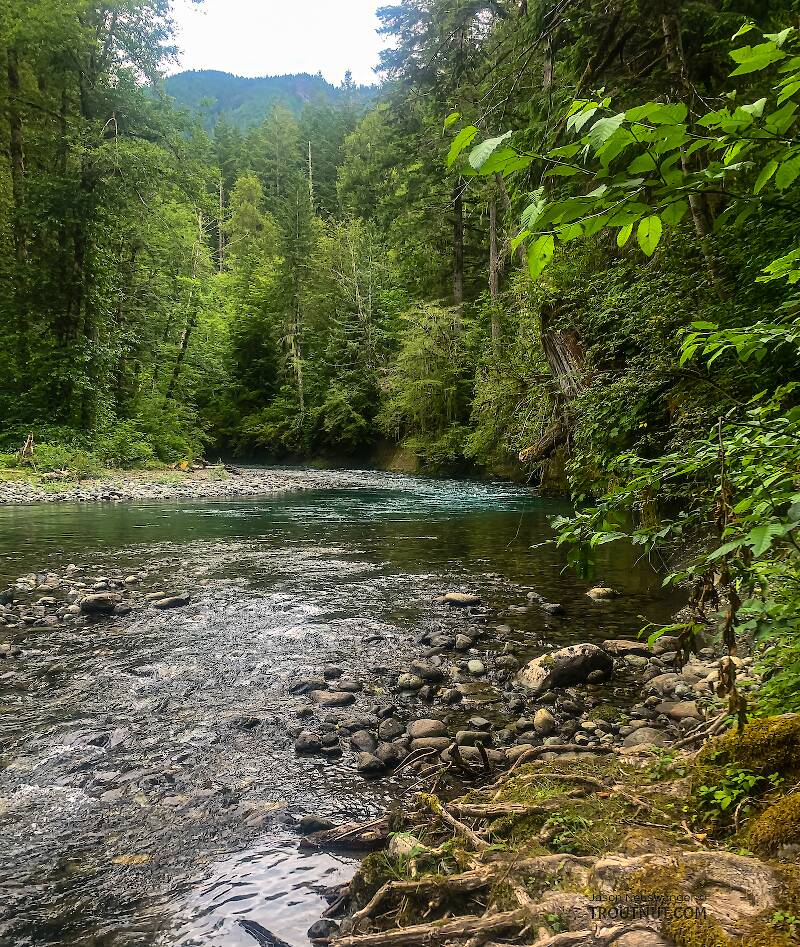
Closeup insects by Troutnut from the Dosewallips River in Washington
Comments / replies
Wbranch on Jul 16, 2020July 16th, 2020, 1:38 am EDT
Wow, what a great looking pool! You should of fished there awhile.
Catskill fly fisher for fifty-five years.
Troutnut on Jul 16, 2020July 16th, 2020, 5:44 pm EDT
I had brought fly fishing gear, but we had to get back. This part of the Olympic Peninsula doesn't have much resident trout fishing, as far as I know. It's almost completely a sea-run fishery and the run wasn't in yet.
Jason Neuswanger, Ph.D.
Troutnut and salmonid ecologist
Troutnut and salmonid ecologist
Quick Reply
Related Discussions
Topic
Replies
Last Reply
17
Feb 11, 2014
by Crepuscular
by Crepuscular
13
Aug 25, 2010
by Shawnny3
by Shawnny3
6
Aug 22, 2010
by Lastchance
by Lastchance


